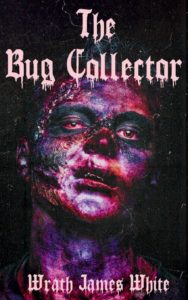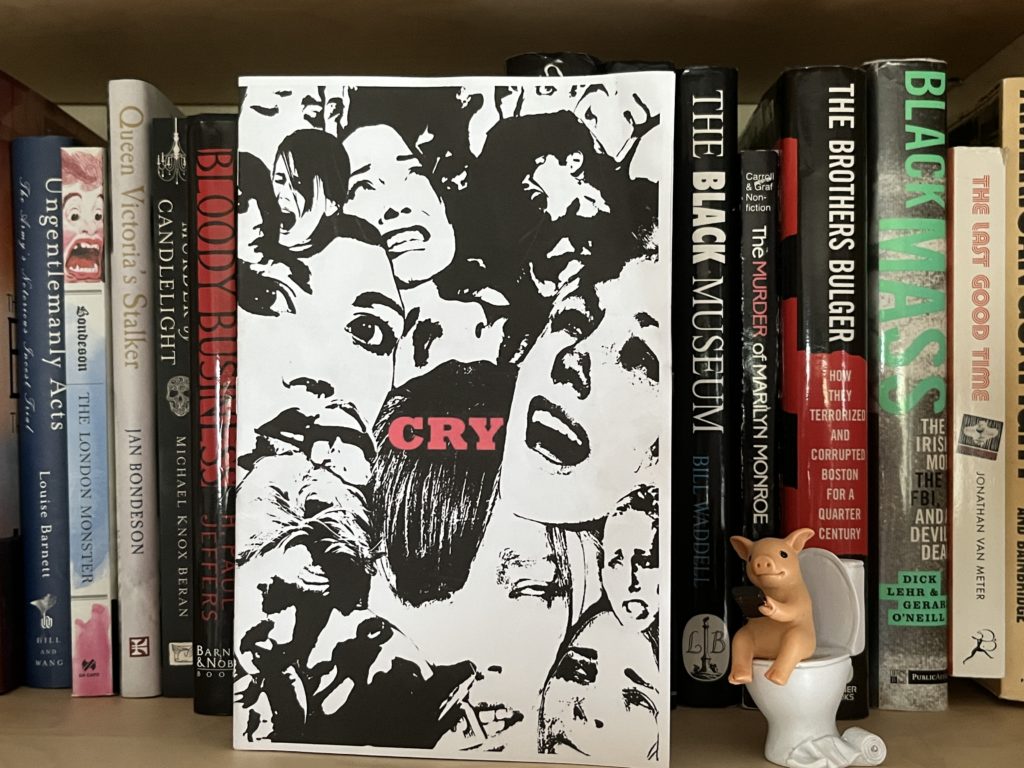Book: The Bug Collector
Author: Wrath James White
Type of Book: Fiction, novella, extreme horror, body horror
Why Do I Consider This Book Odd: It is possibly the most disgusting book I’ve ever read.
 Availability: Published by Bad Dream Books in 2024, you can get a copy here. I read the Kindle version.
Availability: Published by Bad Dream Books in 2024, you can get a copy here. I read the Kindle version.
Comments: About a million Internet years ago, I could not bring myself to discuss in any amount of detail Edward Lee’s short story, “The Dritiphilist.” Remember that? We were so young then.
I’ve toughened up over the years. I’ve been dragged down some nasty roads. I’ve read the now infamous Swamps of Dagobah Reddit story. The stomach-churning Jolly Rancher account barely registers as gross these days. Outside of horrific depictions of child and animal abuse, very little fazes me anymore. But I do have to say that even taking into account the cover and that Wrath James White has been known to get his gross on, I entered into this novella without wholly knowing that it was going to be one of the most intense splatterpunk novels I’ve ever read.
In my defense, I thought the cover was hyperbolic, and I processed the idea of a bug collector through the lens of a documentary about “bug chasers” I saw around twenty years ago called The Gift. At the time, the concept of bug chasing was still new, and the documentary was shocking to a lot who saw it. The bug chasing in the documentary was specifically HIV, and the film looked at men who made the decision to deliberately acquire the virus. It wasn’t disgusting, but it was unsettling and extremely sad in places. I recall specifically one young man who broke down crying as he tried to explain why he wanted to develop HIV and far from it being a sexual fetish for him, it was an acknowledgement that he knew he could end up dying but he felt infection was so inevitable that he just wanted to get it over with. In some way, not having HIV made him feel like an outsider in his community. Due to antivirals and the vastly improved life expectancy now for people who acquire HIV, some young gay men call HIV “gay diabetes” but even as late as 2000, treatment of HIV was dicey, giving a lot of weight to a decision to engage in such sexual nihilism.
Wrath James White took that nihilism and took it a step farther with the notion of “bug collecting.” The protagonist, a man who is evidently named Joey but god help me I somehow walked away from this reading experience without any memory of his name, collects sexually acquired infections. He wants all of them. At once. And he gets them, after spending years engaging in very disgusting sex with equally unsavory partners. He has no equivocation about why he is seeking out around thirty sexually-acquired infections. He is driven by the power of fetish:
My fetish had destroyed my health and ruined my life. I was a victim of my own paraphilia.
He developed his fetish as a result of a random sexual attack when he was a child. He later was shown a public safety film about STDs (or STIs as they are now called), complete with photos of diseased and suppurating genitalia, and with his childhood abuse in mind, those images became his default arousal fodder. Some pre-adolescent boys’ first sexually titillating images were of breasts or even images of staid but interesting heterosexual porn. Joey was turned on by disgusting pictures of bodies ravaged by disease.
Joey engages in a lot of risky behaviors to get his diseases but he is not an “ethical” collector because before the diseases rendered him a shambling, rotting, nose-less zombie, his appearance did not initially warn off prospective sex partners. Though he deliberately had sex with people he hoped would give him diseases, he didn’t consider that perhaps those people would not appreciate a two-way disease exchange. A prostitute he failed to disclose his diseased status to takes him hostage to punish him because, in a bizarre twist of fate, Tina was what is called a “super carrier.” She can be infected with any number of sexually transmitted diseases without showing symptoms, meaning she had no idea she was sick while she was infecting other people. She’s out for revenge and tortures Joey but as she does so, she wants him to explain why the hell he decided to do this to himself and to her and it’s right about here that I am going to stop discussing what happens in this book other than to leave you with the following quote from Miss Tina:
“What the fuck kind of sick white boy shit is that?”
One of the things I struggle with in regards to this sort of horror is that it so often violates basic story-telling tenets. We are told, not shown. Characters are one-dimensional. Plots are absolutely predictable. And editing is sometimes dicey (which I’ve mellowed about over the years but it still is something that leaps out at me).
But somehow this disgusting book works better than its peers and I think I understand why. White uses a traditional story-telling framework, flips the scripts on sex and presents his audience with a repellent take on One Thousand and One Nights. The Bug Collector is Thirty and One Infections and he’s Scheherazade to Tina’s Sultan. Ultimately, he’s more doomed than Scheherazade, and he’s telling stories to delay the inevitable rather than save his life, but the structure is there and it justifies a passive, recitation of events. In a story like this, you must be told rather than shown. The familiarity of the story framework also takes away the sting (and stink, frankly) of this sort of content because we get to keep an arm’s length prurience, hearing about disgusting events without immediacy, reserving urgency for Joey’s current plight.
One other issue I think I sorted out was the tendency for White’s characters to hold forth rather than speak. In this regard, Joey is not engaging in a traditional conversation. He is literally telling stories to save himself. Interestingly, I’ve dinged Edward Lee for this, with his hillbilly rapist discussing deep philosophy with a cop come to arrest him, and may need to reread some of his work and see if my reaction to it is similar to the reaction I had to Joey’s elevated language in The Bug Collector – amusement. There is something quite funny about this man whose appearance resembles an extra on The Walking Dead speaking like a college professor as he explains his appalling fetish to a street prostitute. And this is a book that needs some levity to be sure, so it was welcome rather than discordant.
How exactly did Joey get all those diseases? What does Tina do to him and does he deserve it? No way am I gonna quote from any of those passages. Nope. Absolutely not. Read it and find out.
This sort of horror is not for everyone. It’s written for a very specific audience, the sort of reader who understands the appeal of horror that seems like it is the result of a bunch of horror writers having a drink and egging each other on to see who can come up with the foulest narrative. It’s okay if you aren’t that sort of reader, but if you are, this is one of the better examples of this sort of extreme body horror.
It’s interesting that in a genre that generally causes me no small amount of existential despair I found two examples that work, this novella and May Leitz’s Fluids. I must be getting mellow these days. Still, step cautiously. This really is a gross book that revels in being gross. If you are into that sort of thing, you’ll be as happy as a pig in mud with White’s latest offering.
